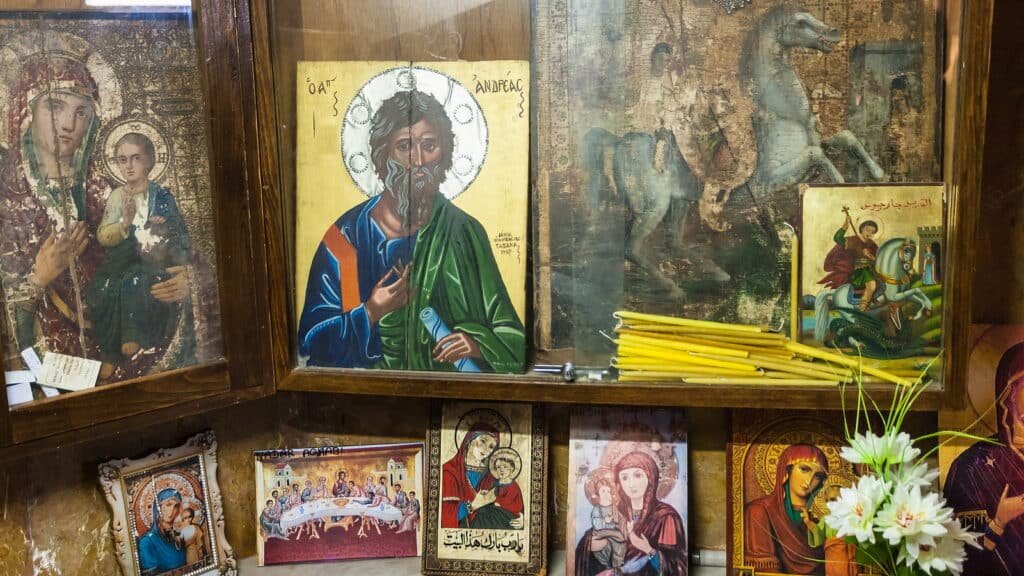
What is an icon? It has a myriad of definitions, so it is easy to get confused. In general, an icon is a sacred image of Jesus Christ or a holy person depicted in a certain place and time, which is of great spiritual importance. It is not a secret that in the Orthodox Church, Russian icons are much more than just the expression or application of human creative skill and imagination; they also give people an idea about what the heavenly realm looks like. Moreover, religious icons are an integral part of our culture. Now, let’s look closer at the basics and main characteristic features of Russian icon paintings and sacred art overall.
Characteristic features of icon paintings and sacred art
1. Icon setting
In Byzantine art, people used a metal cover to protect religious icons. Today, it carries a special meaning in the entire Orthodox world. Such a setting symbolizes the beauty and light of the Lord’s world. For that reason, people usually make it of gilt or silvered metal and sometimes even decorate it with semi-precious and precious stones.
2. Unique stories
Hagiographical icons of saints are extremely popular in Russia. Many of them do not have Byzantine prototypes, making these pieces truly unique. However, in case you want to buy religious icons of that kind, make sure you are able to read and comprehend their meaning. As mentioned above, icons are not just beautiful pictures; they are windows into the sacred world undetectable to the human eye.
3. Incarnation of Christ
Icon paintings and sacred art constantly remind people that Christ became a human being and died to rescue all humanity from their sins. Because of God’s incarnation, we can see and depict Him in the paintings. Furthermore, people also portray other saints and the Mother of God. Such icons are reminders that they used to live on earth and are now in heaven.
4. Colors
Colors are extremely important in sacred art, as they can give a certain state of mind, cheer, energize, as well as make people feel calm and safe. What is more, every color coveys the true meaning of the event depicted in the icon painting.
- Gold. Gold is associated with the divine nature and light symbolizing the eternal day in God’s kingdom.
- Blue. Blue stands for the Kingdom of God or heaven. It shows the infiniteness of the sky. Besides, dark blue is considered the color of the Virgin Mary.
- Red. Red is a symbol of Christ’s sacrifice, life on earth, passion, and love.
- Green. Green signifies eternal renovation, youth, flowering, hope, and nature. It denotes where life begins.
- White. White is associated with purity, holiness, and divine light. It usually indicates people who were faithful and honest in life. The robes of angels are also usually white.
- Black. Black stands for evil and death. Satanic beings, the infernal abyss, and demons are mostly depicted in black. Of course, evil has nothing in common with monks’ robes that are also black. In such cases, black is a symbol of renunciation of secular pleasures.
- Purple. Purple often symbolizes royalty. It shows the glory of Jesus Christ and the Mother of God.
5. Icons are not sentimental pictures
Icons do not show human emotions. While depicting certain historical figures and scenes, they are not created to force an intense emotional response. They teach us what love, forgiveness, patience, compassion, and purity are. An interesting fact is that Christ always has an adult face, even in the icons showing Him as a baby.
Hopefully, you find this brief guide to icon paintings both entertaining and educational. You should definitely learn more about sacred art and Russian icons in particular because they can tell you much more than it may seem at first glance.
